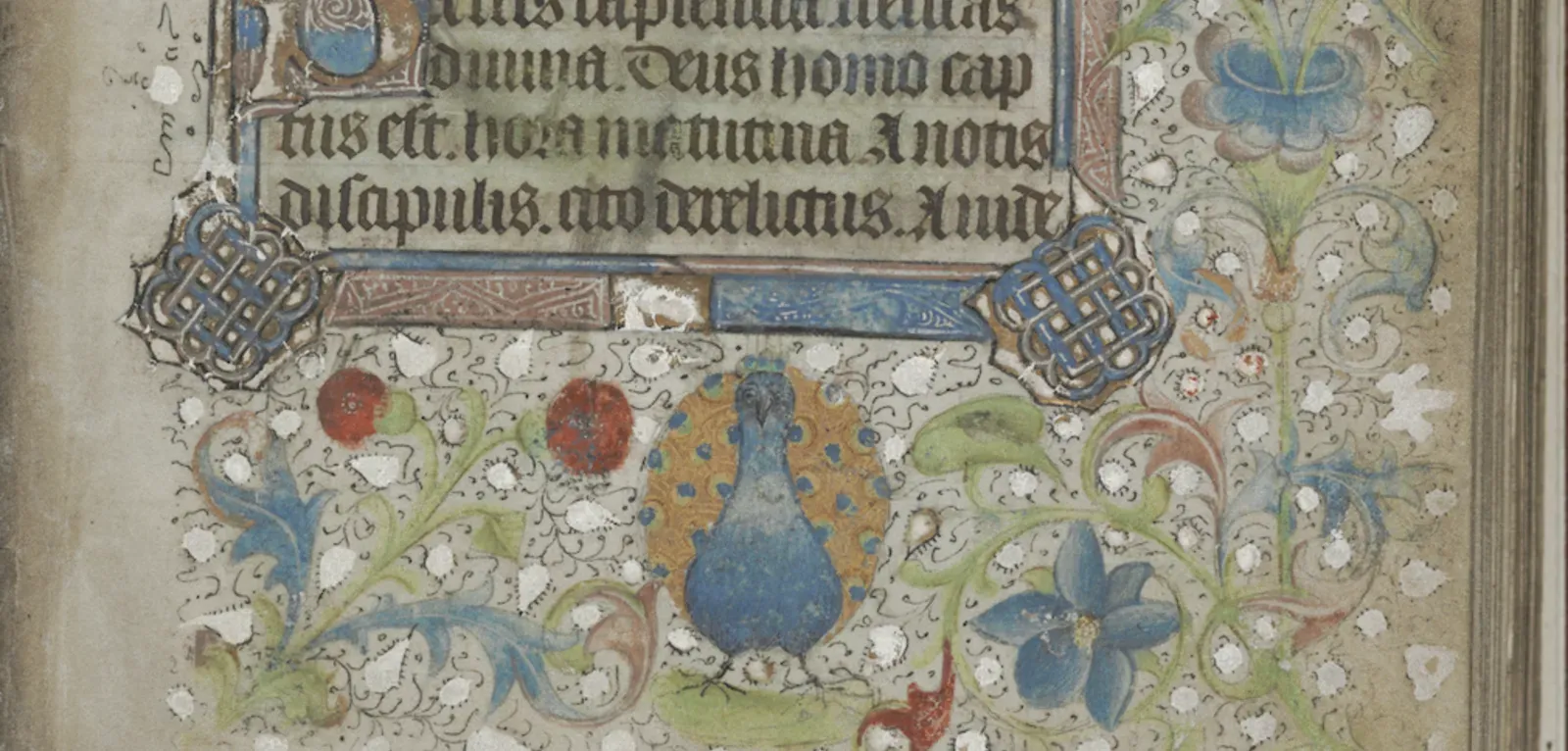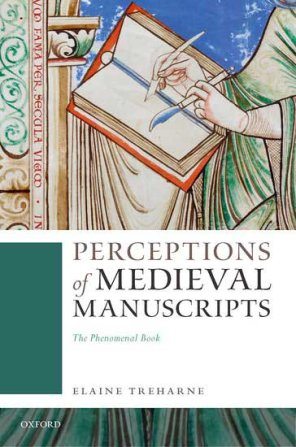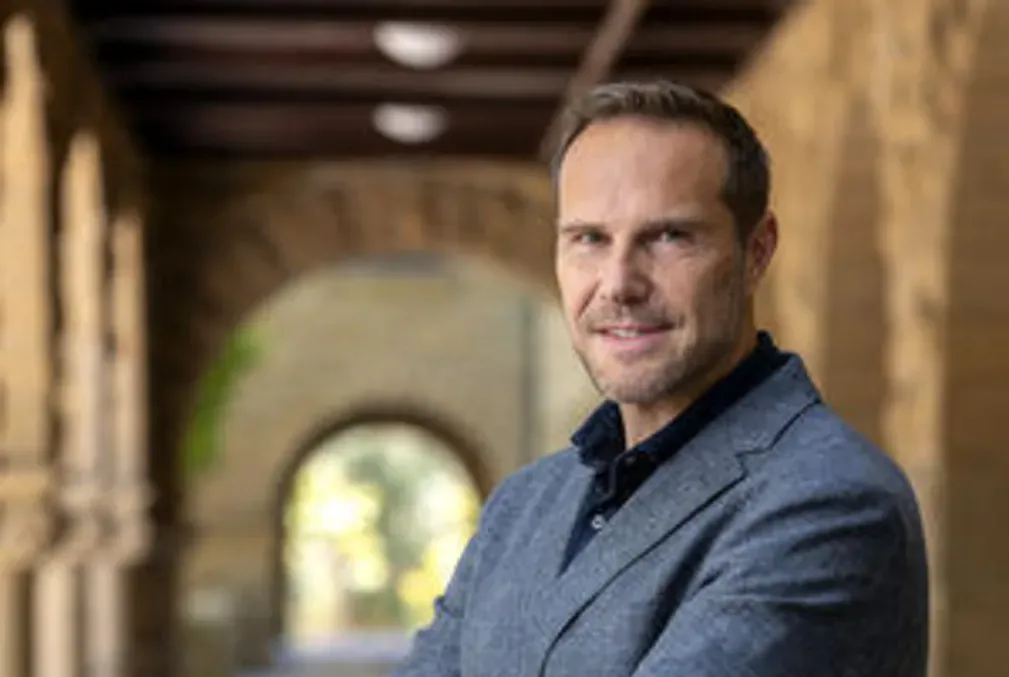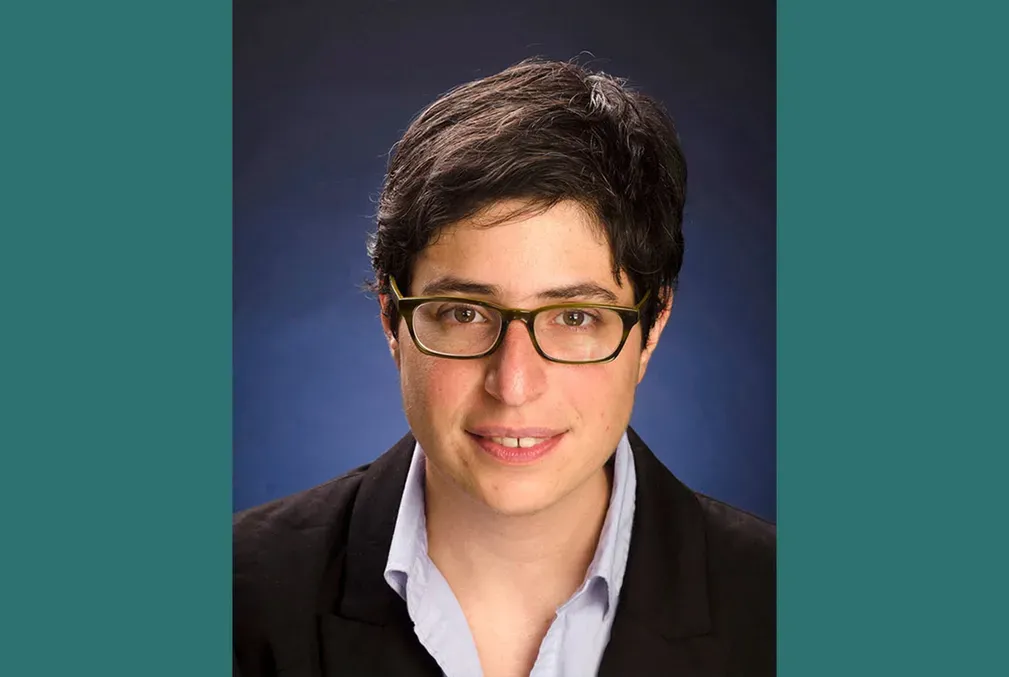
Stanford professor provides new meaning to medieval manuscripts
In her new book, Perceptions of Medieval Manuscripts, Elaine Treharne argues that medieval manuscripts are more than just text on pretty pages.
Medieval literature and manuscript specialist Elaine Treharne held a tattered and burnt lampshade in her hands. The lampshade—made from the pages of a 12th-century manuscript—was a grim reminder of the destructive repurposing that threatens the existence of the books she has dedicated her career to studying.
Treharne’s new book, Perceptions of Medieval Manuscripts: The Phenomenal Book (Oxford University Press, 2021), examines medieval manuscripts and how they are examples of a skilled and valuable craft. Many medieval manuscripts have covers, pages, and decorated bindings that are so visually stunning they are often dismantled and sold in parts, explained Treharne, the Roberta Bowman Denning Professor in the Department of English in the School of Humanities and Sciences (H&S).
“I couldn’t let this research go, because it became clear that my work on manuscripts opens up new and direct connections between the present survival of early books and the past lives of those objects together with all the people whose traces are left in them," said Treharne, the Robert K. Packard University Fellow in Undergraduate Education.
“Sometimes the only evidence for a person’s existence is the note they made while reading, or the care and craft that went into a book’s production. This is compelling information,” said Treharne. “I value every component of a manuscript from the most random of so-called doodles to the gold illumination, unlike some bookdealers today who would break apart and destroy books for the commercial or aesthetic value of individual parts.”
She argues that a medieval manuscript, which is something that is handwritten, is more than just the words on a page. They are works of literature, art, and—most importantly—they are also whole and complete historical objects.
A whole piece
“The inspiration for this book came from realizing that the way in which we describe books is almost always about dividing the object up into parts, when, in reality, the book is always a whole object with a power that is unified through its wholeness,” explained Treharne.
During her doctoral studies, Treharne worked with 12th-century English religious texts, objects that she has continued to work with throughout her career. These medieval manuscripts range in size from something she can hold in her palm to large hardbound books. These books had incredible detailing and illustrations on the cover and page margins, and the bindings were painstakingly sewn together by hand.
She wanted to know how medieval scribes thought of their work and how manuscripts were perceived and valued by readers, listeners, and users during this time. Given the attention to detail in every aspect of the text, Treharne believes these manuscripts were seen as whole objects, rather than parts. She also believes scribes thought of the total reading experience and, therefore, made each detail of the manuscript matter.
Treharne explained that it’s easy to pick up a book and think of only the text—to quickly flip through the beginning title pages or close the book after the last word rather than read the indexes or appendices. Even digital images of books create a fragmentation and leave the viewer with the impression of the book in pieces rather than as a whole object, which prevents the reader from ever seeing the book in its entirety.
“We tend not to think of books other than words on the page, but the book is the whole thing,” said Treharne. “Perceptions of Medieval Manuscripts is about looking at the evidence for how medieval people conceived of the manuscript book.”
Handwritten and handmade
Treharne’s research consisted of reading and analyzing countless medieval manuscripts and images of books. One manuscript in particular, an anonymous book of poetry gifted to Exeter Cathedral that is known simply as the Exeter Book, provided Treharne with the evidence and confidence to think about books as whole objects, she explained. Exeter Book contains Riddle 26, a 10th-century Old English riddle that begins with “a certain enemy robbed me of my life, stole my world-strength; afterward he soaked me, dunked me in water, dragged me out again, set me in the sun, where I swiftly lost the hairs that I had.”
This poetic riddle is about an object that reveals itself to the reader through clues in the words, explained Treharne. Riddle 26 is the story of the animal skin the manuscript is written on, from its beginning as an animal to its ending as a religious manuscript.
After studying the manuscript of Riddle 26 “it became clear that rather than thinking of the book as a container of text and image, they thought of it as a whole thing with all its parts united,” Treharne explained.
“This piece inspires the structure of my entire book,” said Treharne. Each chapter title in Perceptions of Medieval Manuscripts comes from this riddle.
Object in the world
One of the main points Treharne makes is that a manuscript or book is a “living” object, also known as an “object in the world.” For this book in particular, Treharne relied on the teachings of Maurice Merleau-Ponty, a French philosopher and phenomenologist, who looked at how items function in the world and how people perceive them. The theory behind phenomenology is that a single object, in this case a manuscript, can have multiple functions depending on the person viewing the object; the world around the person and the object at that time; and the person’s past and present experiences, emotions, and background. This perspective also means that a book can mean something for one person and something entirely different for another person. Two people can interact with the same book in different ways.
“How does a book engage with all the things it encounters in the world? That’s the inspiration that Merleau-Ponty gave me,” said Treharne. “An object in the world is a living object. Even though it may seem to be an inanimate object, it functions in different ways depending on the specific context and the person who encounters it. This idea gives agency to the object itself.”
Perceptions of Medieval Manuscripts is a continuation of Treharne’s work on communication.
“The whole book—through time and space and all the readers it encounters—is living. It’s unstable but always whole. It changes shape in successive moments of time. We need to have this understanding for medieval manuscripts to make sure they don’t continue to get cut up and sold in parts,” said Treharne. Otherwise, “we risk thinking of the medieval book only as the text [or ornamentation] it contains and not as the rich array of concentrated and unique evidence it holds for cultural and intellectual history.”
Media contact: Holly Alyssa MacCormick, Stanford School of Humanities and Sciences: hollymac [at] stanford [dot] edu (hollymac[at]stanford[dot]edu)






